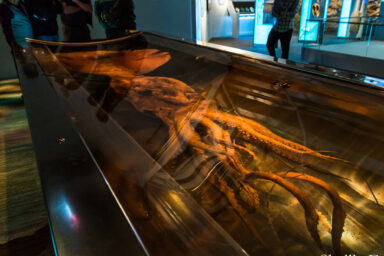New Bill Strips Presidential Authority to Shut Down Internet
The US Eliminated Nearly 21,000 Election Day Polling Locations ; 9 Ways to Reform the Supreme Court Besides Court-Packing ; and More Picks 10/23
The US Eliminated Nearly 21,000 Election Day Polling Locations for 2020 (DonkeyHotey)
From VICE: “Of the 45 states that weren’t using mail voting exclusively before the 2020 election, 40 of them have decreased the number of Election Day voting locations from 2016. Of those 40 states who made cuts, 35 are not sending mail ballots to everyone, and 19 require many voters to take it upon themselves to apply for a mail ballot application. The five states that refused to allow mail voting for most people all cut voting sites, including the emerging swing state of Texas. The net result of all of these changes: A 20% dip in polling places across the country from 2016, and a 22% drop since 2012. And while the coronavirus pandemic has accelerated this trend, it didn’t create it: There were more than 3,000 fewer polling locations in 2016 than in 2012.”
Chelsea, MA, Is About to Become the Country’s Biggest Experiment in Giving Out No-Strings-Attached Checks (Reader Steve)
From the Boston Globe: “Chelsea, one of the poorest cities in the state, is about to host a bold experiment in reimagining capitalism, one that may answer an age-old question: Can giving away money with no strings attached help people out of poverty? Beginning in November, about 2,000 low-income families will be given $200 to $400 a month, money that can be used for anything from food to paying bills. The trial, with $3 million in seed money and set to run for four months at first, is a version of the universal basic income concept that has long been debated, tested in small measures, but not implemented by any country.”
9 Ways to Reform the Supreme Court Besides Court-Packing (Dana)
The author writes, “Although the Constitution provides that there must be a Supreme Court, it does not say how many justices shall serve on that Court. Over the course of American history, the Court has had as few as five seats and as many as 10. President Franklin Roosevelt proposed increasing the number of seats to 15 back in 1937 — although that proposal proved unpopular, and it died in Congress in no small part because the Supreme Court backed away from several previous decisions that undermined the New Deal. Even if Democrats crush the 2020 election, however, it’s far from clear that they will have the votes to pack the Court. … And packing the Court brings considerable risks — the biggest is that Republicans could retaliate by adding even more justices if they regain control of the elected branches.”
What the Photos of Wildfire and Smoke Don’t Tell You (Dan)
The authors write, “We talked to a handful of photojournalists, forest ecologists and firefighters about how fire images get made. … The three key takeaways from our conversations are: 1. Fire photos often stir up fear and leave out ‘good fire,’ which the public needs to see in order to understand and support managed burns. 2. Fire photos often make fire look like an enemy best attacked with something like a military campaign, an idea that is often wrong, a waste of money and ineffective. 3. Fire photos make fire look far more ubiquitous than it is, even in the midst of big blazes.”
2,000-Year-Old Nazca Line Featuring Lounging Cat Found in Peru (Dana)
The author writes, “Archaeologists have discovered a 2,000-year-old etching of a cat carved into a hillside some 250 miles southeast of Lima, Peru. … The feline, which measures about 120 feet long, has wide, orb-like eyes and appears to be sunning itself. The newly identified likeness is a Nazca Line — one of hundreds of ancient drawings created in the Peruvian desert by removing rock and soil to produce a ‘negative’ image in the sand. … Other Nazca Lines depict animals including orcas, monkeys, hummingbirds and spiders, as well as geometric shapes and humanoid figures.”



